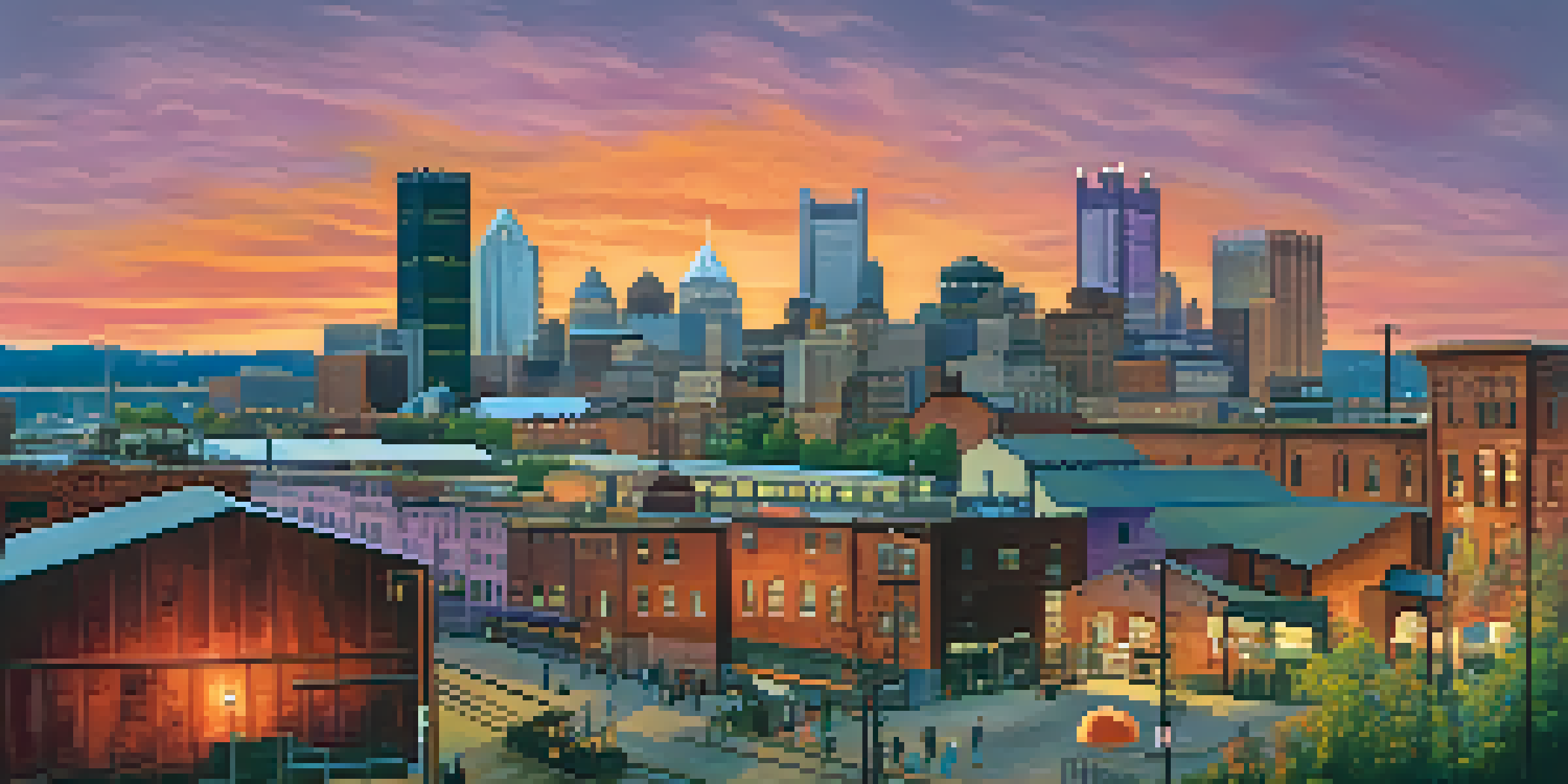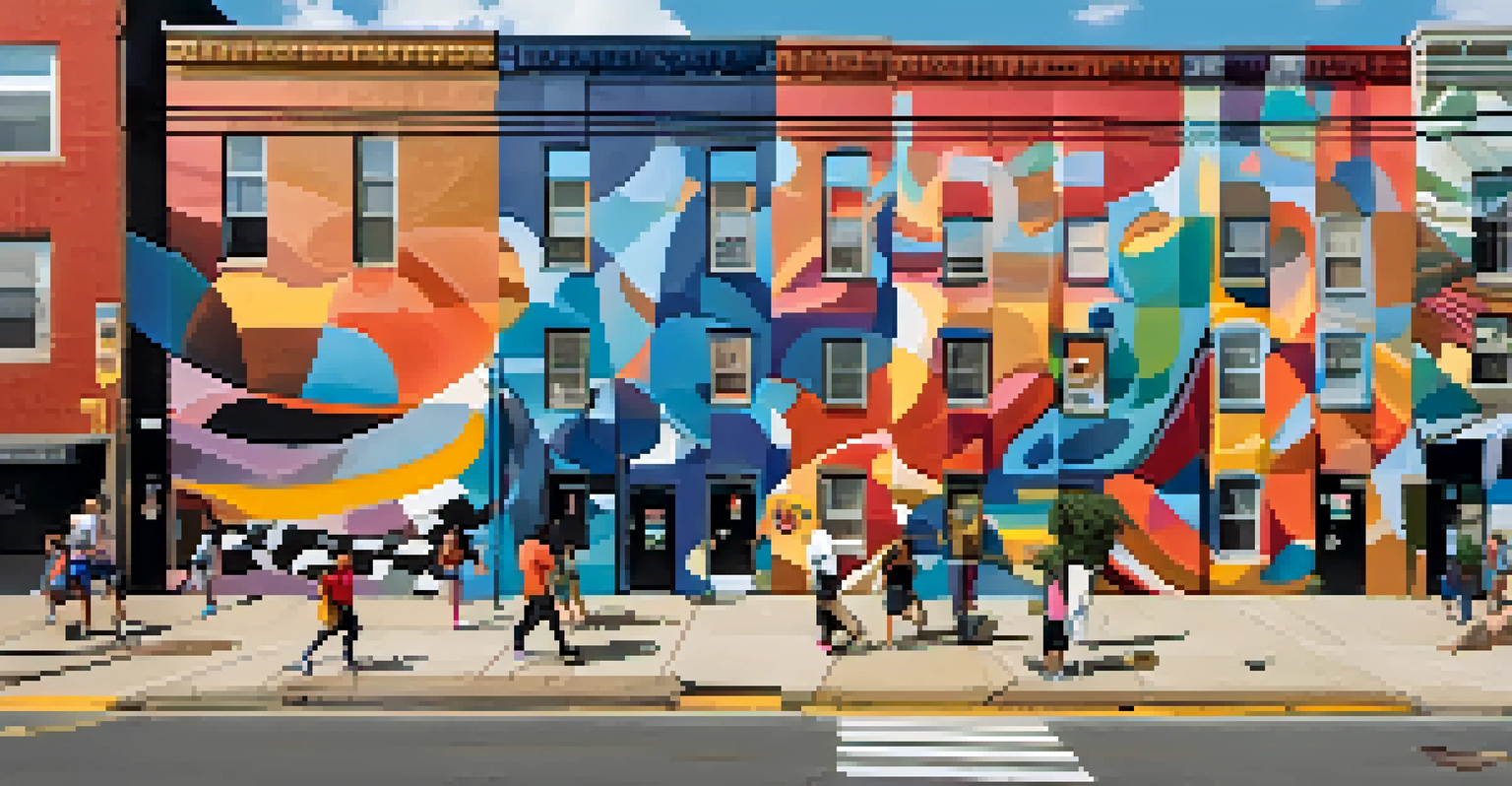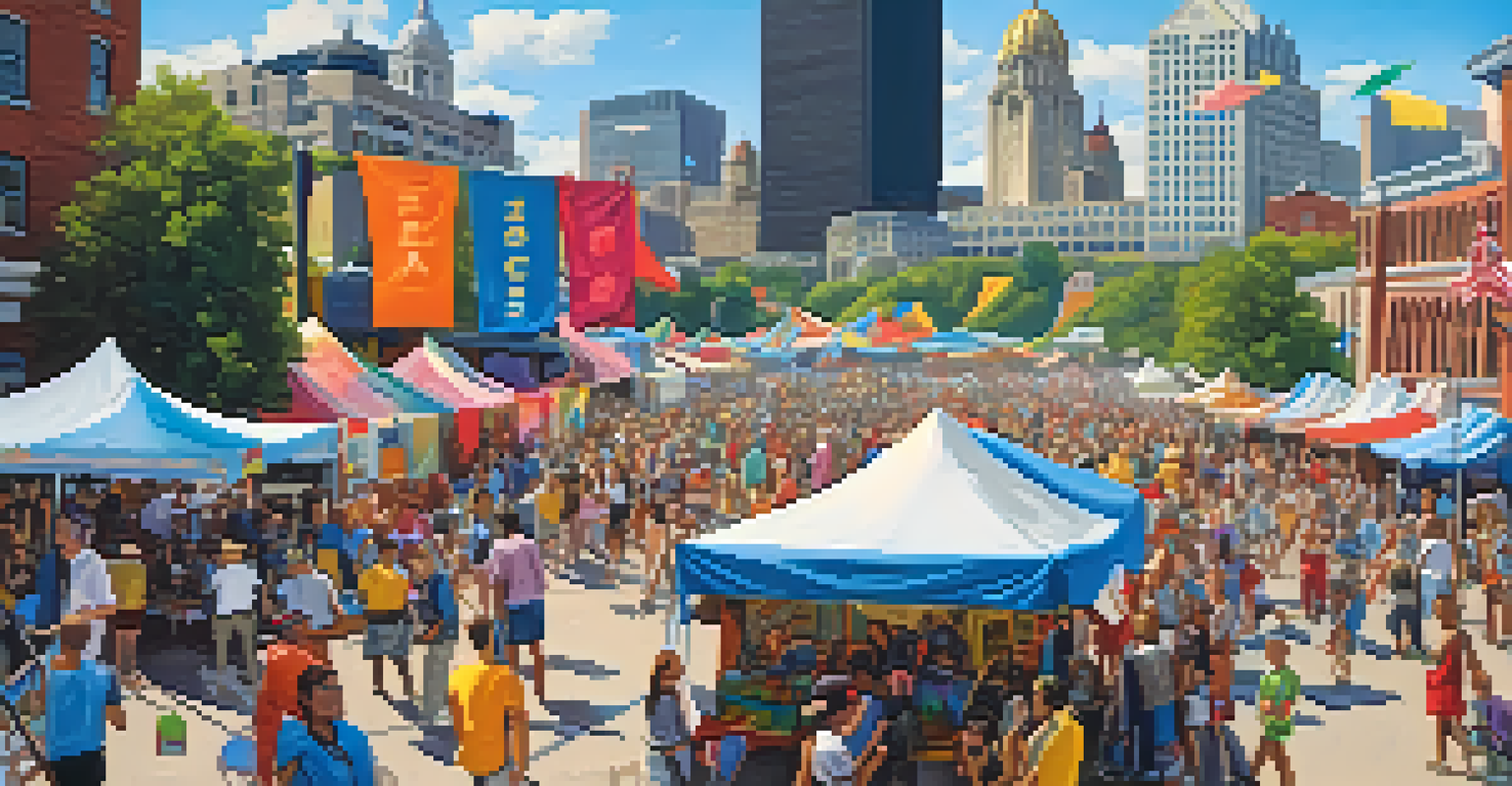From Industry to Art: The Transformation of Pittsburgh's Landmarks

The Industrial Roots of Pittsburgh's Landscape
Pittsburgh, once known as the Steel City, thrived on industry and manufacturing. Its skyline was dominated by factories and smokestacks, which represented both hard work and innovation. However, as industries evolved and eventually declined, these structures began to tell a different story—a story of change and transformation.
Art is not freedom from discipline, but disciplined freedom.
Many of these once-bustling sites now sit vacant, yet they hold a unique charm and potential. The remnants of steel mills and warehouses became blank canvases, inviting artists and visionaries to reimagine their purpose. This shift from industrial hub to artistic haven has breathed new life into the city.
As we explore the artistic revival of Pittsburgh, we see how these landmarks serve as a backdrop for creativity. The city's history isn't just a tale of decline; it's a testament to resilience and reinvention, where art emerges from the very fabric of its industrial past.
Reviving the Past: Adaptive Reuse in Pittsburgh
Adaptive reuse is a powerful concept that involves repurposing old buildings for new uses while preserving their historical significance. In Pittsburgh, this approach has transformed dilapidated factories into trendy art studios, galleries, and performance spaces. It's a win-win situation: the city retains its historical architecture while fostering a vibrant arts scene.

One shining example is the Carrie Furnace, a former steel mill that has been transformed into an outdoor art space and venue for cultural events. By blending the remnants of its industrial past with contemporary art, the space tells a compelling story of Pittsburgh's evolution. Artists from all over have found inspiration within its walls, creating a dialogue between history and modern expression.
Pittsburgh's Industrial Legacy Revived
The transformation of vacant industrial sites into artistic spaces showcases Pittsburgh's resilience and creativity.
This trend of adaptive reuse highlights the importance of community involvement and collaboration. Local artists and organizations work hand in hand to bring new life to these spaces, ensuring that the city’s rich history is not forgotten but celebrated through creativity.
Art in Unexpected Places: Murals and Street Art
Pittsburgh’s transformation into an artistic hub can be seen vividly in its public spaces. Murals and street art have exploded across the city, turning blank walls into vibrant masterpieces. These works of art not only beautify the environment but also communicate stories and messages from the community.
The purpose of art is not a rarified, intellectual distillate; it is life, intensified, brilliant life.
Artists like the renowned muralist Kyle Holbrook have left their mark on the city, creating large-scale pieces that reflect Pittsburgh's identity and culture. Local residents often participate in the mural-making process, fostering a sense of community pride in their neighborhood. This collaborative spirit is a testament to how art can unite people from different backgrounds.
The murals have become a canvas for social and political expression, addressing issues such as diversity, equity, and environmental concerns. As you wander through the streets, you'll find these colorful artworks stirring conversations and inviting viewers to engage with the city on a deeper level.
Cultural Festivals: Celebrating Art and Community
Pittsburgh hosts a variety of cultural festivals that celebrate its artistic transformation. Events like the Three Rivers Arts Festival and the Pittsburgh International Festival of Firsts showcase local and international artists, drawing crowds eager to experience the city's creative spirit. These festivals are not just about art; they foster community connections and strengthen the city's identity.
During these events, attendees can enjoy live performances, art installations, and interactive workshops, allowing them to engage with the art in meaningful ways. Local artists often have the opportunity to showcase their work and connect with audiences who appreciate their craft. This sense of connection is vital for nurturing the local arts community.
Adaptive Reuse Enriches Art Scene
Repurposing historic buildings for modern art fosters community involvement and preserves the city's heritage.
Moreover, these festivals highlight the diversity of Pittsburgh’s cultural landscape. They bring together artists from various backgrounds, providing a platform for different voices and perspectives to be heard, ultimately enriching the city's artistic narrative.
The Role of Art Institutions in Pittsburgh
Art institutions play a crucial role in fostering creativity and supporting artists in Pittsburgh. Organizations like the Andy Warhol Museum and the Carnegie Museum of Art not only preserve the city's rich artistic heritage but also provide resources and opportunities for local talent. These institutions serve as hubs for artistic development and community engagement.
Exhibitions and programs offered by these museums often focus on contemporary issues, encouraging dialogue around social, cultural, and environmental topics. They also host workshops and artist residencies that empower emerging artists to hone their skills and showcase their work. This nurturing environment stimulates artistic growth within the community.
Additionally, partnerships between these institutions and local artists or organizations have led to innovative projects that further enhance Pittsburgh's cultural landscape. By collaborating with artists, museums can offer unique experiences that reflect the city's evolving identity, bridging the gap between the past and the future.
Public Art: Sculptures and Installations
Public art has become a defining feature of Pittsburgh, with sculptures and installations adorning parks, plazas, and streets. These works invite interaction and reflection, encouraging residents and visitors to engage with the environment in new ways. From the iconic 'Pittsburgh's Point' sculpture to the whimsical 'Mister Roger's Neighborhood' installation, public art reflects the city's character and values.
Many of these artworks celebrate Pittsburgh's industrial heritage while embracing contemporary themes. For instance, the 'Bicycle Heaven' installation pays homage to the city’s cycling culture, promoting sustainability and active living. Such pieces not only beautify the landscape but also foster a sense of belonging among community members.
Public Art Enhances Community Identity
Murals and sculptures throughout Pittsburgh not only beautify the city but also reflect its diverse culture and values.
Moreover, public art initiatives often involve local artists, ensuring that the works resonate with the community. By giving artists a platform to express their vision, Pittsburgh showcases a rich tapestry of creativity that reflects its diverse population and history.
The Future of Pittsburgh's Artistic Identity
As Pittsburgh continues to evolve, its artistic identity remains at the forefront of this transformation. The city’s commitment to creativity and innovation is evident in the ongoing support for the arts, from public projects to community initiatives. This dedication helps cultivate a thriving environment for artists and art enthusiasts alike.
Looking ahead, the integration of technology and art is likely to shape the future of Pittsburgh's creative landscape. Digital art, interactive installations, and virtual reality experiences are becoming more prevalent, expanding the ways in which art can be experienced and appreciated. This fusion of art and technology opens up exciting possibilities for artistic expression.

Pittsburgh's journey from an industrial powerhouse to a vibrant art destination is a testament to its resilience and adaptability. As the city embraces change, it will continue to attract artists and art lovers, solidifying its place as a cultural beacon in the region and beyond.